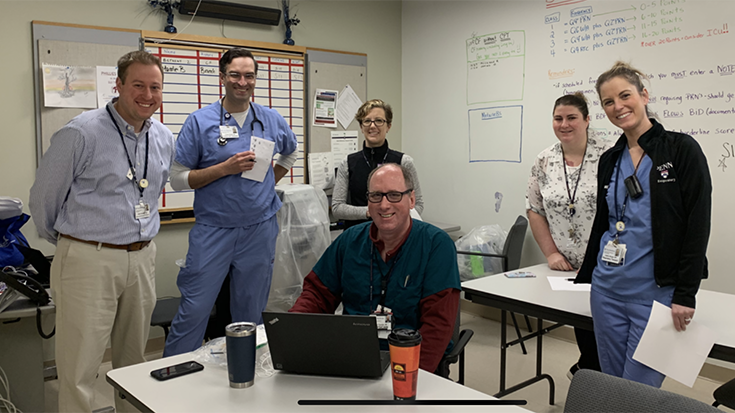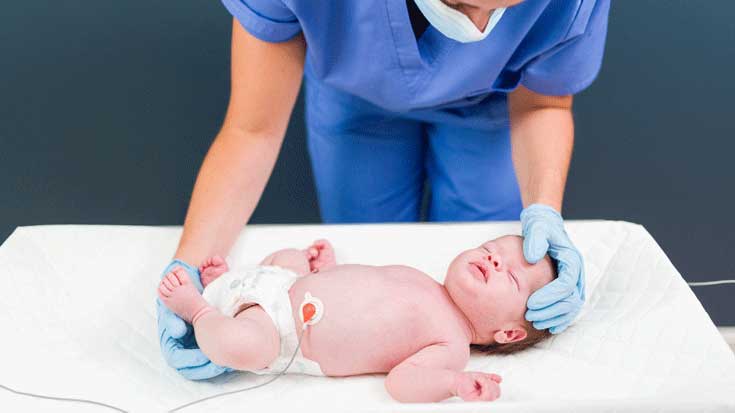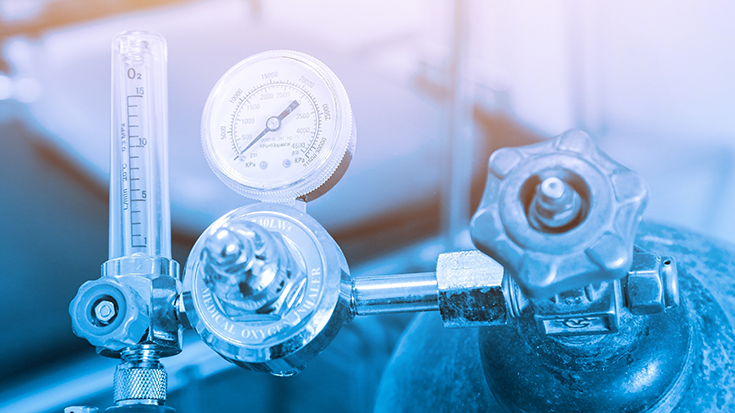
We use Noninvasive ventilation (NIV) to treat various disease processes, such as acute hypercapnic and hypoxemic respiratory failure, post-extubation failure, and neuromuscular diseases.1-3 Data supports NIV use in some conditions, like acute exacerbation of COPD and cardiogenic pulmonary edema, and continues to evolve in others.4-7 While proper patient selection is vital to the success of NIV, additional aspects of NIV are crucial to successful implementation and subsequent management of the modality. Ventilator, interface, and mode/setting selections are all critical components to the proper delivery of NIV.8-11
Several NIV interfaces are available, including nasal masks, oronasal masks, mouthpieces, total face masks, and helmets.12 When selecting the best interface, the clinician must consider various factors, such as patient tolerance factors, facial skin breakdown, medication delivery, and device availability. The primary clinical goal in NIV use is to minimize the need for intubation, invasive mechanical ventilation, and the associated adverse effects.13 This article will evaluate device interfaces, helmets, and facemasks (oronasal and total), for NIV delivery in the acute care setting.
Oronasal and Total Face Masks
Oronasal and total face masks are commonly used to deliver NIV for patients in acute respiratory failure.12,14 There is considerable data to support the clinical effectiveness of oronasal and total face masks.12,15 These masks are familiar to most clinicians and are available in many facilities.
There are some notable shortcomings with oronasal and total face masks that respiratory therapists should consider. Oronasal masks might increase the risk for aspiration, and patients may find it challenging to communicate and clear secretions while the mask is in place. The total face mask limits the use of aerosolized medications.12
Facial skin breakdown is also an important consideration with oronasal mask interfaces. The prolonged use of face masks interfaces has caused skin irritation and breakdown. A skin injury can occur after only a few hours, commonly seen on the bridge of the nose.16 Beyond the direct impact on the patient, facial skin breakdown is a significant source of concern with NIV use due to the negative impact that skin-related events have on costs and reimbursement.17,18
To mitigate skin breakdown on the bridge of the nose, total facemasks can be used, at least temporarily, as an alternative to oronasal masks to reduce the risk of skin damage.12 Total face masks help with skin breakdown by offloading the pressure placed on the bridge of the nose associated with the oronasal interface.16 Total face masks are comfortable, and some evidence suggests that switching between multiple different interfaces can minimize skin breakdown.15,16,19
Helmet
The helmet interface can also be used to deliver NIV. Helmets cover the entire head and seal around the neck, having straps that fit under the arms.12,20,21 Some evidence suggests that helmets may be an alternative to masks at improving arterial blood gases, and many patients tolerate the interface well.10 Helmet NIV can improve oxygenation, inspiratory effort, and shortness of breath compared to high flow nasal oxygen therapy in patients with acute hypoxemic respiratory failure.22 A 2016 systematic review and meta-analysis that included 11 studies and 621 patients found that helmet NIV was associated with a reduction in intubation and hospital mortality when compared to study control strategies. The study authors noted that the helmet was at least as effective as the mask interfaces regarding gas exchange. They also noted that more extensive studies (randomized controlled trials) were needed, as robust scientific evidence was lacking.23 A 2017 systematic review and meta-analysis, in a subgroup analysis, also suggested that helmet NIV could reduce intubation and mortality in some patients. Similar to the 2016 study, the authors conceded that their study findings needed to be confirmed by larger studies.24
Respiratory therapists must know the potential limitations of the helmet. While the helmet does not carry the same risk of facial skin irritation and breakdown as the mask devices, the skin should be monitored around the neck and under the arms where the straps touch the patient.13 Additionally, the increased volume inside of the helmet might increase the likelihood of CO2 rebreathing. Rebreathing of CO2 is dependent on the amount of fresh gas that flushes the device and the amount produced by the patient.12,25 Thus, adequate gas flows and proper safety valves are needed to assure patient safety during helmet NIV.25
Which interface is best?
The choice of interface is an important consideration when delivering NIV. Oronasal and total face masks are common choices to deliver NIV in the acute care setting. Evidence supports using either mask to deliver NIV to treat acute hypoxemic respiratory failure.12 These masks are often readily available in acute care settings, and respiratory therapists are familiar with their uses and limitations. The helmet interface may be a viable alternative to mask interfaces due to the lower risk of facial dermal lesions (compared to masks), patient tolerability, and some positive outcomes. The helmet interface received much attention during the COVID-19 pandemic, as some European organizations recommended it to reduce aerosol dispersion for the safety of healthcare providers.27 Some reports have indeed demonstrated the feasibility of the helmet interface during the pandemic.28,29 That said, a recent randomized clinical trial showed that patients with moderate to severe hypoxemia due to COVID-19 treated with helmet NIV had no difference in days free of respiratory support when compared to high-flow nasal oxygen.30
It is not clear which is superior for the delivery of NIV, mask interfaces or helmets. It is likely that both options play a role and have clinical use in scenarios where their unique attributes make them the best option. However, it is also likely that both have limitations that prevent their use in some clinical situations. More research is needed to help drive decisions regarding the various NIV interfaces’ use and the management strategies unique to each. Regardless of the NIV interface used, respiratory therapists responsible for the initiation and subsequent management of NIV should be well trained on each interface they have available to them in their facility.
References
- Hill NS, Spoletini G, Schumaker G, Garpestad E. Noninvasive Ventilatory Support for Acute Hypercapnic Respiratory Failure. Respir Care. 2019;64(6):647-657.
- Piraino T. Noninvasive Respiratory Support in Acute Hypoxemic Respiratory Failure. Respir Care. 2019;64(6):638-646.
- Benditt JO. Respiratory Care of Patients With Neuromuscular Disease. Respir Care. 2019;64(6):679-688.
- Brochard L, Isabey D, Piquet J, et al. Reversal of acute exacerbations of chronic obstructive lung disease by inspiratory assistance with a face mask. N Engl J Med. 1990;323(22):1523-1530.
- Osadnik CR, Tee VS, Carson-Chahhoud KV, Picot J, Wedzicha JA, Smith BJ. Noninvasive ventilation for the management of acute hypercapnic respiratory failure due to exacerbation of chronic obstructive pulmonary disease. Cochrane Database Syst Rev. 2017;7(7):CD004104.
- Kondo Y, Kumasawa J, Kawaguchi A, Seo R, Nango E, Hashimoto S. Effects of noninvasive ventilation in patients with acute respiratory failure excluding post-extubation respiratory failure, cardiogenic pulmonary edema and exacerbation of COPD: a systematic review and meta-analysis. J Anesth. 2017 Oct;31(5):714-725.
- Vital FM, Ladeira MT, Atallah AN. Noninvasive positive pressure ventilation (CPAP or bilevel NPPV) for cardiogenic pulmonary oedema. Cochrane Database Syst Rev. 2013 May 31;(5):CD005351. doi: 10.1002/14651858.CD005351.pub3. Update in: Cochrane Database Syst Rev. 2019 Apr 05;4:CD005351. PMID: 23728654.
- Scott JB. Ventilators for Noninvasive Ventilation in Adult Acute Care. Respir Care. 2019;64(6):712-722.
- Chiumello D, Pelosi P, Carlesso E, Severgnini P, Aspesi M, Gamberoni C, Antonelli M, Conti G, Chiaranda M, Gattinoni L. Noninvasive positive pressure ventilation delivered by helmet vs. standard face mask. Intensive Care Med. 2003 Oct;29(10):1671-9.
- Pisani L, Mega C, Vaschetto R, Bellone A, Scala R, Cosentini R, Musti M, Del Forno M, Grassi M, Fasano L, Navalesi P, Nava S. Oronasal mask versus helmet in acute hypercapnic respiratory failure. Eur Respir J. 2015 Mar;45(3):691-9.
- Kwok H, McCormack J, Cece R, Houtchens J, Hill NS. Controlled trial of oronasal versus nasal mask ventilation in the treatment of acute respiratory failure. Crit Care Med. 2003;31(2):468-473.
- Hess DR. Noninvasive ventilation for acute respiratory failure. Respir Care. 2013;58(6):950-972.
- Piraino T. Noninvasive Respiratory Support. Respir Care. 2021;66(7):1128-1135.
- Crimi C, Noto A, Princi P, Esquinas A, Nava S. A European survey of noninvasive ventilation practices. Eur Respir J. 2010 Aug;36(2):362-9.
- Chacur FH, Vilella Felipe LM, Fernandes CG, Lazzarini LC. The total face mask is more comfortable than the oronasal mask in noninvasive ventilation but is not associated with improved outcome. Respiration. 2011;82(5):426-430.
- Yamaguti WP, Moderno EV, Yamashita SY, Gomes TG, Maida AL, Kondo CS, de Salles IC, de Brito CM. Treatment-related risk factors for development of skin breakdown in subjects with acute respiratory failure undergoing noninvasive ventilation or CPAP. Respir Care. 2014 Oct;59(10):1530-6.
- Centers for Medicare and Medicaid Services (CMS), HHS. Medicaid program; payment adjustment for provider-preventable conditions including health care-acquired conditions. Final rule. Fed Regist2011;76(108):32816–32838.
- Visscher MO, White CC, Jones JM, Cahill T, Jones DC, Pan BS. Face Masks for Noninvasive Ventilation: Fit, Excess Skin Hydration, and Pressure Ulcers. Respir Care. 2015;60(11):1536-1547.
- Brill, A.-K. (2014). How to avoid interface problems in acute noninvasive ventilation. Breathe, 10(3), 230–242.
- Amirfarzan H, Cereda M, Gaulton TG, et al. Use of Helmet CPAP in COVID-19 – A practical review [published online ahead of print, 2021 Feb 1]. Pulmonology. 2021;S2531-0437(21)00040-4.
- Nava S, Navalesi P, Gregoretti C. Interfaces and humidification for noninvasive mechanical ventilation. Respir Care 2009;54(1):71-84.
- Grieco DL, Menga LS, Raggi V, et al. Physiological Comparison of High-Flow Nasal Cannula and Helmet Noninvasive Ventilation in Acute Hypoxemic Respiratory Failure. Am J Respir Crit Care Med. 2020;201(3):303-312.
- Liu Q, Gao Y, Chen R, Cheng Z. Noninvasive ventilation with helmet versus control strategy in patients with acute respiratory failure: a systematic review and meta-analysis of controlled studies. Crit Care. 2016;20(1):265.
- Xu XP, Zhang XC, Hu SL, et al. Noninvasive Ventilation in Acute Hypoxemic Nonhypercapnic Respiratory Failure: A Systematic Review and Meta-Analysis. Crit Care Med. 2017;45(7):e727-e733.
- Radovanovic D, Rizzi M, Pini S, Saad M, Chiumello DA, Santus P. Helmet CPAP to Treat Acute Hypoxemic Respiratory Failure in Patients with COVID-19: A Management Strategy Proposal. J Clin Med. 2020;9(4):1191.
- Bello G, De Pascale G, Antonelli M. Noninvasive Ventilation. Clin Chest Med. 2016;37(4):711-721.
- Raoof S, Nava S, Carpati C, Hill NS. High-Flow, Noninvasive Ventilation and Awake (Nonintubation) Proning in Patients With Coronavirus Disease 2019 With Respiratory Failure. Chest. 2020;158(5):1992-2002.
- Coppadoro A, Benini A, Fruscio R, et al. Helmet CPAP to treat hypoxic pneumonia outside the ICU: an observational study during the COVID-19 outbreak. Crit Care. 2021;25(1):80.
- Rali AS, Howard C, Miller R, et al. Helmet CPAP revisited in COVID-19 pneumonia: A case series. Can J Respir Ther. 2020;56:32-34.
- Grieco DL, Menga LS, Cesarano M, et al. Effect of Helmet Noninvasive Ventilation vs High-Flow Nasal Oxygen on Days Free of Respiratory Support in Patients With COVID-19 and Moderate to Severe Hypoxemic Respiratory Failure: The HENIVOT Randomized Clinical Trial. JAMA. 2021;325(17):1731-1743
Email newsroom@aarc.org with questions or comments, we’d love to hear from you.















